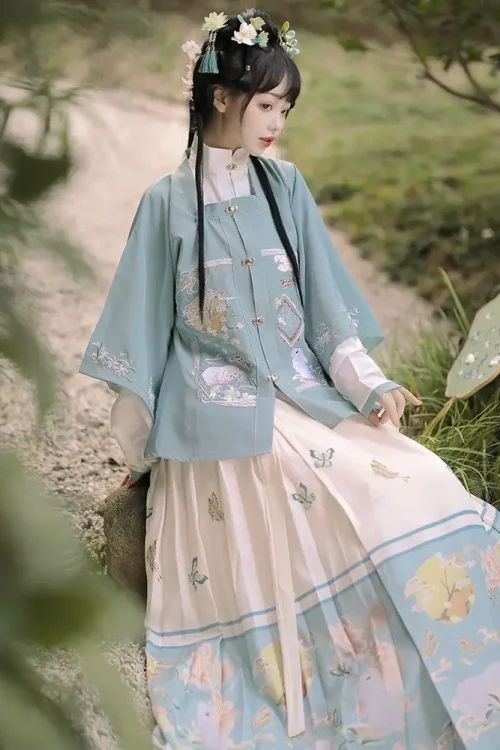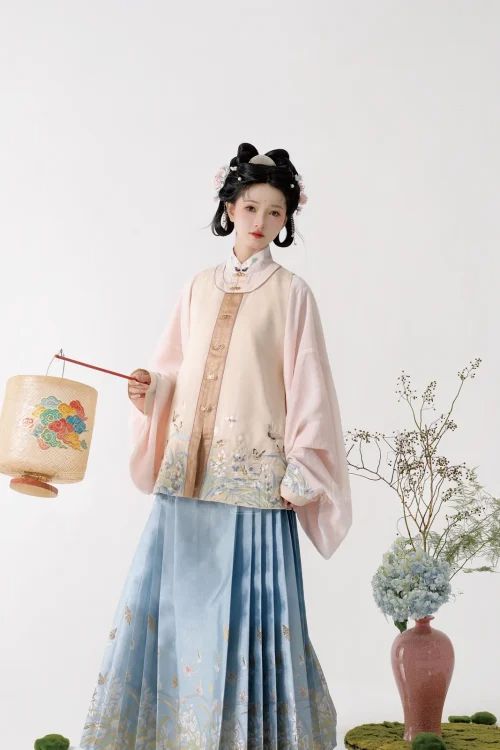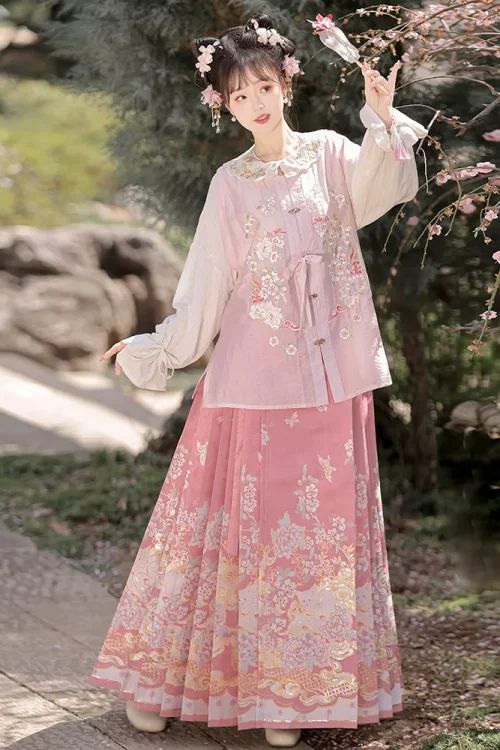The Language of Threads: Deciphering the Symbolic Motifs in Ming Embroidery
In the intricate world of Ming embroidery, each stitch carries a profound symbolic meaning, weaving a tapestry of cultural beliefs and aspirations. This ancient art form, with its vibrant threads and delicate patterns, offers a glimpse into the hearts and minds of the Ming dynasty’s elite.

Symbolic Motifs: The Phoenix and Dragon
The phoenix, a mythical bird symbolizing immortality and prosperity, frequently adorned imperial robes. Its graceful curves and vibrant plumage represented the emperor’s divine mandate to rule. Dragons, symbols of power and protection, intertwined with clouds, signifying the emperor’s connection to the heavens.
Floral Significance
Floral motifs held equal significance. Peonies, with their lush blooms, represented wealth and honor. Lotus flowers, emerging from murky waters, symbolized purity and enlightenment. Bamboo, with its resilience and flexibility, embodied strength and longevity.
Animal Symbols
Animals also played a prominent role in Ming embroidery. Tigers, symbols of courage and ferocity, guarded against evil spirits. Cranes, with their graceful flight, represented longevity and wisdom. Fish, swimming in abundance, symbolized prosperity and fertility.
Subtle Motifs and Hidden Messages
Beyond these overt symbols, Ming embroidery also employed subtle motifs that conveyed hidden messages. The “hundred boys” pattern, depicting numerous children, represented the desire for a large and prosperous family. The “eight treasures” motif, featuring eight auspicious objects, symbolized wealth and good fortune.
The Power of Color
The colors used in Ming embroidery were equally symbolic. Red, the color of fire and passion, represented joy and celebration. Yellow, the imperial color, symbolized power and authority. Blue, associated with water, represented tranquility and peace.
结论
By unraveling the meanings behind these intricate stitches, we gain a deeper understanding of Ming culture and its values. Embroidery was not merely a decorative art but a powerful medium through which the elite expressed their hopes, fears, and aspirations. It was a language of threads, a tapestry of symbols that continues to captivate and inspire generations to come.
Stitched Stories: Exploring the Narratives Woven into Ming Embroidery
In the intricate world of Ming embroidery, each stitch carries a profound significance, weaving a tapestry of symbols that unravels a rich narrative. From the auspicious motifs to the subtle nuances of color, every element holds a hidden meaning, inviting us to delve into the depths of this ancient art form.

The Celestial Creatures
The phoenix, a mythical bird symbolizing immortality and rebirth, takes flight in vibrant threads, its graceful wings outstretched. Its presence signifies the emperor’s divine mandate and the hope for a prosperous reign. The dragon, a symbol of power and strength, coils and undulates across the fabric, its scales shimmering with an otherworldly glow. Together, these celestial creatures represent the harmonious balance between heaven and earth.
Floral Motifs and Their Meanings
Floral motifs bloom in abundance, each flower carrying its own unique symbolism. The peony, with its lush petals and vibrant hues, represents wealth and prosperity. The lotus, emerging from murky waters, embodies purity and enlightenment. The chrysanthemum, with its delicate petals, symbolizes longevity and resilience. These botanical elements not only add beauty to the embroidery but also convey auspicious wishes and aspirations.
The Importance of Color
Color plays a pivotal role in conveying meaning. Red, the color of fire and passion, is reserved for the emperor and his family. Yellow, the color of the sun, represents imperial authority. Blue, the color of the sky and water, symbolizes tranquility and harmony. Green, the color of nature, represents growth and prosperity. Through the skillful use of color, Ming embroiderers created a visual symphony that resonated with the beliefs and values of their time.
Personal Expressions in Embroidery
Beyond the overt symbolism, Ming embroidery also reveals subtle nuances that speak to the personal experiences and aspirations of the embroiderers themselves. The choice of stitches, the tension of the thread, and the placement of motifs all contribute to the unique character of each piece. In the hands of skilled artisans, embroidery became a form of self-expression, allowing them to convey their hopes, dreams, and fears through the medium of thread.
结论
By unraveling the meanings behind Ming embroidery, we gain a deeper understanding of the cultural and historical context in which it was created. It is an art form that transcends mere decoration, becoming a window into the beliefs, values, and aspirations of a bygone era. As we stitch together the fragments of this intricate tapestry, we not only appreciate its beauty but also uncover the rich narratives woven into its threads.
Threads of Tradition: The Cultural Significance of Symbols in Ming Embroidery
In the intricate world of Ming embroidery, each stitch carries a profound symbolic meaning, weaving a tapestry of cultural significance. From auspicious motifs to hidden messages, the art of Ming embroidery transcends mere decoration, becoming a visual language that speaks volumes about the beliefs, values, and aspirations of the Ming dynasty.

The Dragon: Symbol of Imperial Power
One of the most prevalent symbols in Ming embroidery is the dragon, a mythical creature revered as a symbol of imperial power and authority. Its sinuous body, adorned with scales and claws, represents strength, wisdom, and the ability to overcome adversity. The dragon’s presence in embroidery often signifies the wearer’s connection to the emperor or their desire for protection and good fortune.
The Phoenix: Beauty and Grace
Another common motif is the phoenix, a legendary bird associated with beauty, grace, and immortality. Its vibrant plumage and elegant form symbolize the empress or high-ranking women. The phoenix is often depicted in pairs, representing the harmonious union of yin and yang, the balance of male and female energies.
Floral Motifs in Ming Embroidery
Floral motifs also play a significant role in Ming embroidery. The peony, known as the “king of flowers,” represents wealth, prosperity, and honor. Its lush petals and vibrant colors symbolize the beauty and abundance of life. The lotus, on the other hand, is associated with purity, enlightenment, and the ability to rise above adversity. Its delicate petals and long stem represent the journey from darkness to light.
Subtle Meanings and Color Connotations
Beyond these well-known symbols, Ming embroidery also incorporates more subtle and hidden meanings. For example, the use of certain colors carries specific connotations. Red, the color of fire and passion, is associated with joy, celebration, and good luck. Blue, the color of water and the sky, represents tranquility, peace, and longevity.
Placement of Motifs
The placement of motifs within the embroidery also holds symbolic significance. A dragon positioned on the front of a garment signifies the wearer’s desire for protection, while a phoenix on the back represents their hope for a bright future. The use of auspicious symbols in pairs, such as two dragons or two phoenixes, enhances their power and effectiveness.
结论
In conclusion, the symbolism in Ming embroidery is a testament to the rich cultural heritage of the Ming dynasty. Each stitch, motif, and color carries a profound meaning, reflecting the beliefs, values, and aspirations of the people who created and wore these exquisite works of art. By unraveling the meanings behind these symbols, we gain a deeper understanding of the cultural significance of Ming embroidery and the enduring legacy it has left on Chinese art and culture.
Embroidery is a vital part of 明代汉服, if you are interested in things more about Ming Dynasty Hanfu, please concentrate on our blog.
